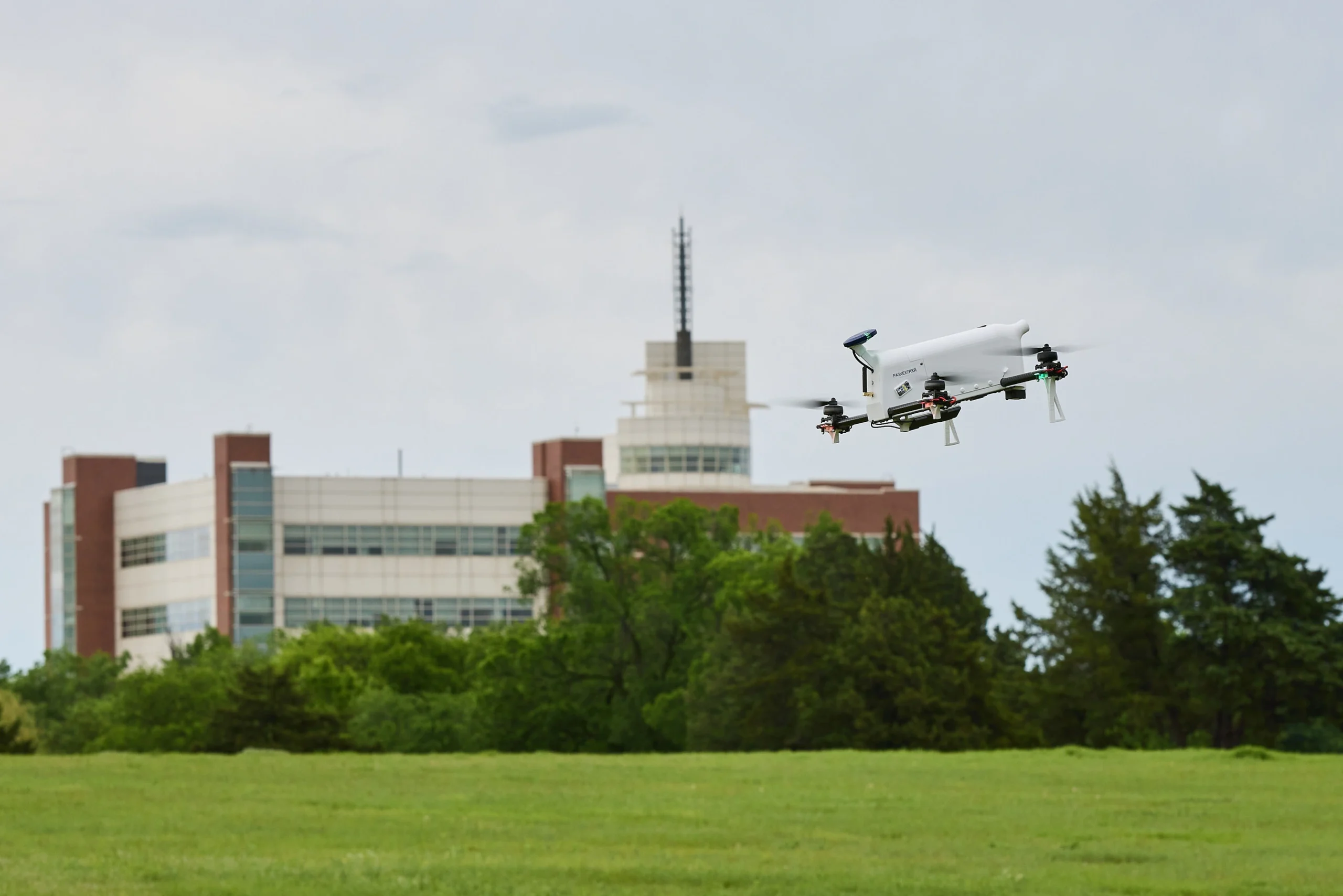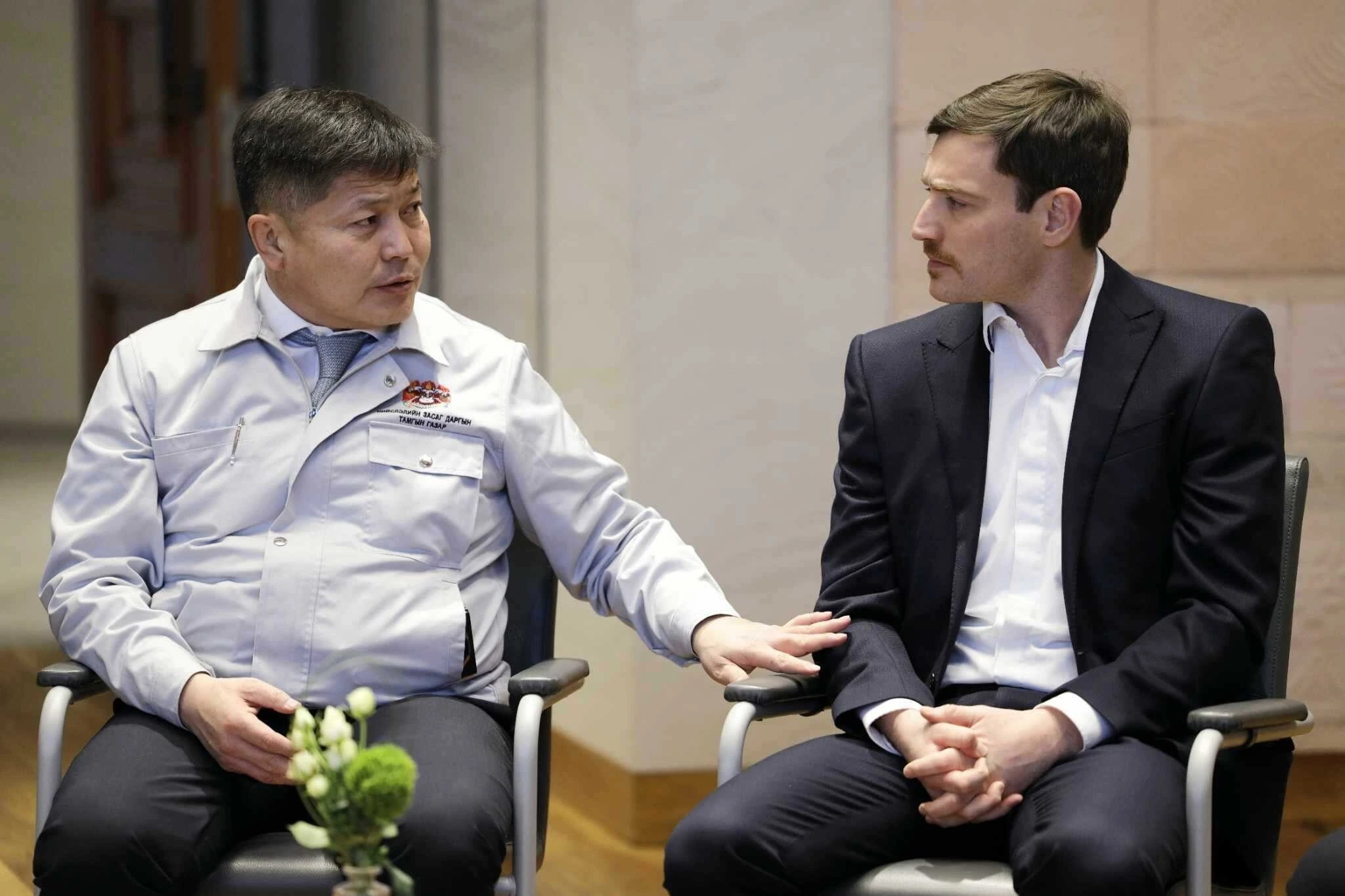US researchers develop storm-resistant drone to improve extreme weather forecasting

John E. Kaye
- Published
- Technology

U.S researchers have developed the world’s first drone capable of flying directly into dangerous weather systems to collect real-time atmospheric data
The CopterSonde-3D is designed to improve forecasting of tornadoes, hurricanes and other high-impact weather events by targeting the lower levels of the atmosphere, where changes occur rapidly and current methods fall short.
Unlike weather balloons, which are swept off course or rise too quickly, the drone can be held in position at precise locations. Other drones, by contrast, lack the power to remain stationary in such conditions.
The aircraft is equipped with temperature and humidity sensors arranged to avoid contamination from onboard heat sources. It uses a patented front-scoop design to draw air across its instruments while maintaining flight stability.
According to experts at the University of Oklahoma, the CopterSonde is capable of operating in rapidly evolving storm systems and hazardous environments that are otherwise inaccessible to human observers.
The team plans to enable autonomous flights and eventual deployment across weather monitoring stations, forming a nationwide network of responsive, low-altitude atmospheric sensors.
Delays or inaccuracies in forecasting can reduce warning times for extreme weather, placing lives at risk and limiting emergency response. According to the National Weather Service, average tornado warnings offer just 8 to 13 minutes’ notice. Improved low-level data could enable earlier and more accurate alerts.
In the United States, tornadoes, hurricanes and severe storms cause billions of dollars in damage each year. In 2023 alone, the National Oceanic and Atmospheric Administration recorded 28 separate billion-dollar weather and climate disasters.
Dr Tony Segales, who began developing the drone in 2017 during his doctoral research and now leads its engineering, said: “We designed the CopterSonde to essentially be a weathervane: It points into the wind. That’s the baseline feature from which all the other onboard weather-targeted features were designed.”
The CopterSonde-3D has been tested in more than 1,700 flights across varied environments, including high-altitude terrain in Colorado, humid coastal areas near Houston, and storm-prone regions of the southeastern United States. It was also deployed during the 2023 Rolling Fork tornado outbreak, flying into severe weather alongside researchers from NOAA’s National Severe Storms Laboratory.
The system is now being adapted to operate in extreme conditions, including high winds, icing and sustained electronic stress.
Dr Segales added: “On the engineering side of things, this represents a big challenge. The drone would have to max out during every flight, which puts more stress on the electronics.
“We want to measure the limits of the performance of these drones on extreme events to see how much we can really push the systems for sustained amounts of time.”
In one case, during a 2019 winter storm in central Oklahoma, the drone recorded minute-by-minute changes in precipitation—switching between sleet, ice, rain and freezing rain.
Dr Tyler Bell, a meteorologist and co-inventor of the system, said: “That’s an example of how we can improve forecasts using this data, because in those conditions half a degree matters, and the Copter can get that half a degree really, really well.”
Bell said traditional weather balloon launches by the U.S National Weather Service take place only twice daily and often miss crucial shifts in the lowest one or two miles of the atmosphere. “That lowest one or two miles of the atmosphere is where we live, and it’s the part that influences a lot of high-impact weather,” he said. “The rate at which it changes is much higher than what those twice-a-day launches can capture.”
He added: “A forecaster could select an area where they wanted more observations, and the drones would collect that data the forecaster needs in the moment.”
A second patent is pending for a related design. Future models are expected to be adapted for specific hazards, including drones engineered to withstand ice build-up on their rotor blades, and others designed to remain stable in hurricane-force winds.
The University of Oklahoma is home to CIWRO and the National Severe Storms Laboratory.
Main photo: The CopterSonde has been developed in the National Weather Center (background), a hub of meteorological research headquartered at the University of Oklahoma. (Credit, Jonathan Kyncl).
Sign up to The European Newsletter
RECENT ARTICLES
-
 Curium’s expansion into transformative therapy offers fresh hope against cancer
Curium’s expansion into transformative therapy offers fresh hope against cancer -
 What to consider before going all in on AI-driven email security
What to consider before going all in on AI-driven email security -
 GrayMatter Robotics opens 100,000-sq-ft AI robotics innovation centre in California
GrayMatter Robotics opens 100,000-sq-ft AI robotics innovation centre in California -
 The silent deal-killer: why cyber due diligence is non-negotiable in M&As
The silent deal-killer: why cyber due diligence is non-negotiable in M&As -
 South African students develop tech concept to tackle hunger using AI and blockchain
South African students develop tech concept to tackle hunger using AI and blockchain -
 Automation breakthrough reduces ambulance delays and saves NHS £800,000 a year
Automation breakthrough reduces ambulance delays and saves NHS £800,000 a year -
 ISF warns of a ‘corporate model’ of cybercrime as criminals outpace business defences
ISF warns of a ‘corporate model’ of cybercrime as criminals outpace business defences -
 New AI breakthrough promises to end ‘drift’ that costs the world trillions
New AI breakthrough promises to end ‘drift’ that costs the world trillions -
 Watch: driverless electric lorry makes history with world’s first border crossing
Watch: driverless electric lorry makes history with world’s first border crossing -
 UK and U.S unveil landmark tech pact with £250bn investment surge
UK and U.S unveil landmark tech pact with £250bn investment surge -
 International Cyber Expo to return to London with global focus on digital security
International Cyber Expo to return to London with global focus on digital security -
 Cybersecurity talent crunch drives double-digit pay rises as UK firms count cost of breaches
Cybersecurity talent crunch drives double-digit pay rises as UK firms count cost of breaches -
 Investors with €39bn AUM gather in Bologna to back Italy’s next tech leaders
Investors with €39bn AUM gather in Bologna to back Italy’s next tech leaders -
 Axians and Nokia expand partnership to strengthen communications infrastructure across EMEA
Axians and Nokia expand partnership to strengthen communications infrastructure across EMEA -
 Forterro buys Spain’s Inology to expand southern Europe footprint
Forterro buys Spain’s Inology to expand southern Europe footprint -
 Singapore student start-up wins $1m Hult Prize for education platform
Singapore student start-up wins $1m Hult Prize for education platform -
 UK businesses increase AI investment despite economic uncertainty, Barclays index finds
UK businesses increase AI investment despite economic uncertainty, Barclays index finds -
 Speed-driven email security: effective tactics for phishing mitigation
Speed-driven email security: effective tactics for phishing mitigation -
 Short circuit: humanoids go for gold at first 'Olympics for robots'
Short circuit: humanoids go for gold at first 'Olympics for robots' -
 New IBM–NASA AI aims to forecast solar flares before they knock out satellites or endanger astronauts
New IBM–NASA AI aims to forecast solar flares before they knock out satellites or endanger astronauts -
 AI is powering the most convincing scams you've ever seen
AI is powering the most convincing scams you've ever seen -
 British firm Skyral to help Mongolia tackle pollution with AI traffic modelling
British firm Skyral to help Mongolia tackle pollution with AI traffic modelling -
 The nuclear medicine breakthrough transforming cancer care
The nuclear medicine breakthrough transforming cancer care -
 Second to none: the watchmaker who redefined time for women
Second to none: the watchmaker who redefined time for women -
 How AI agents are supercharging cybercrime
How AI agents are supercharging cybercrime



























